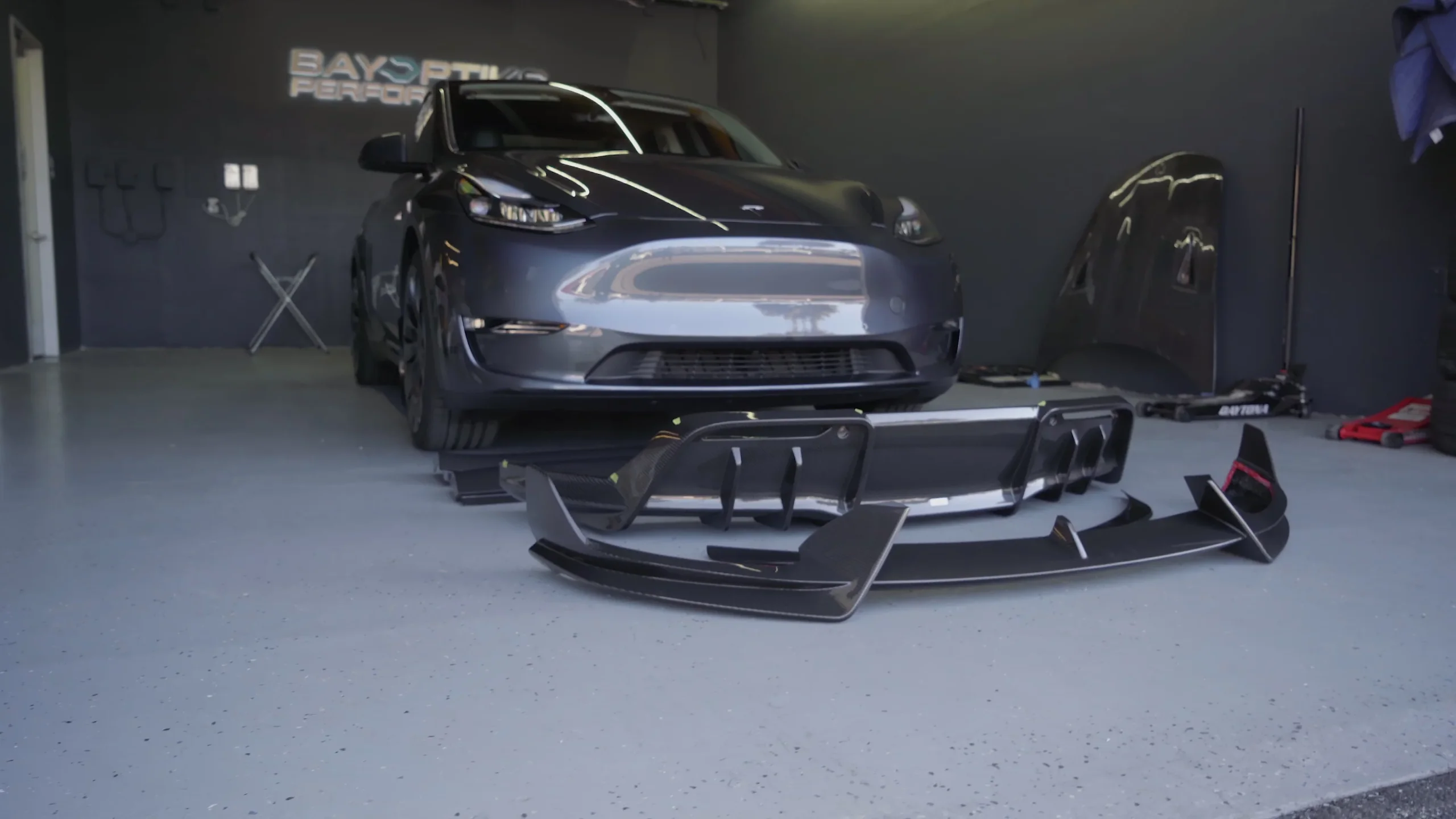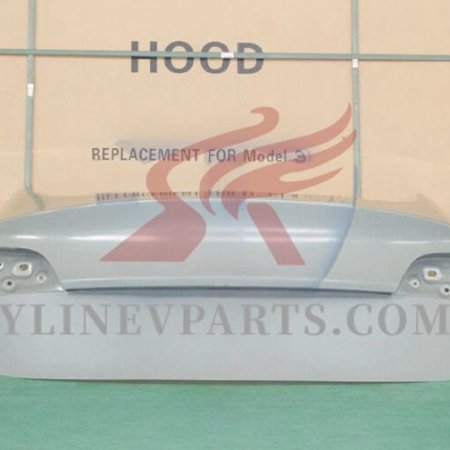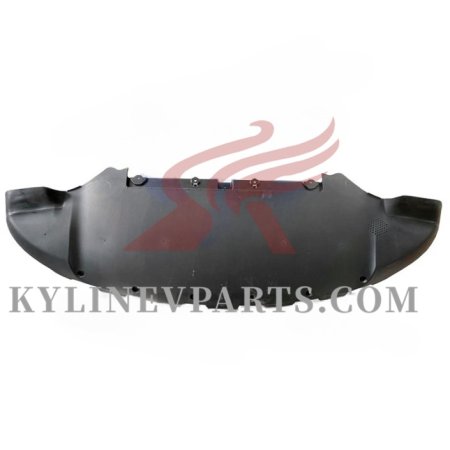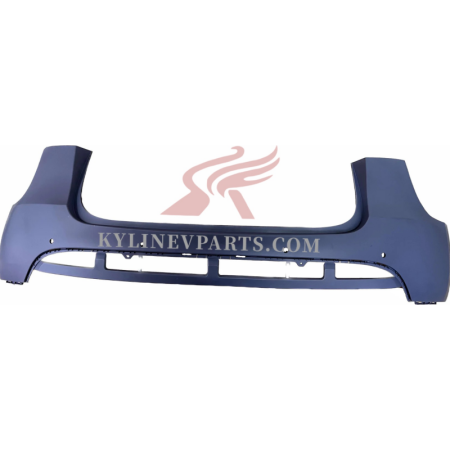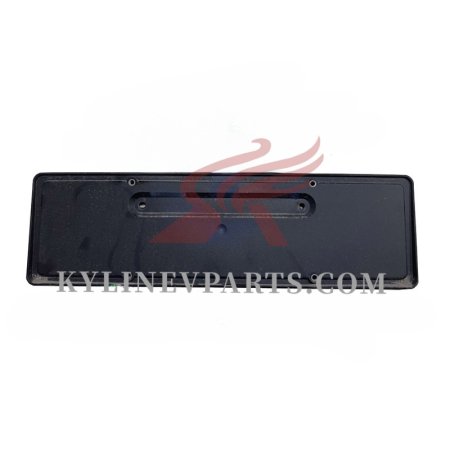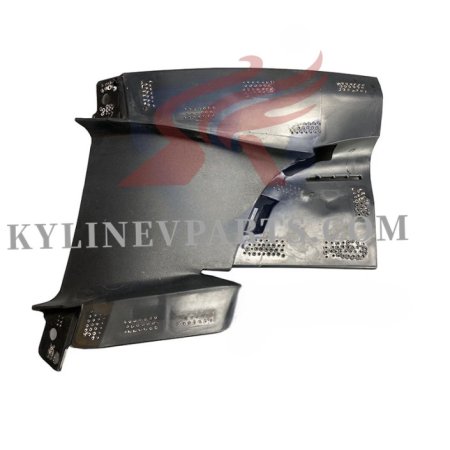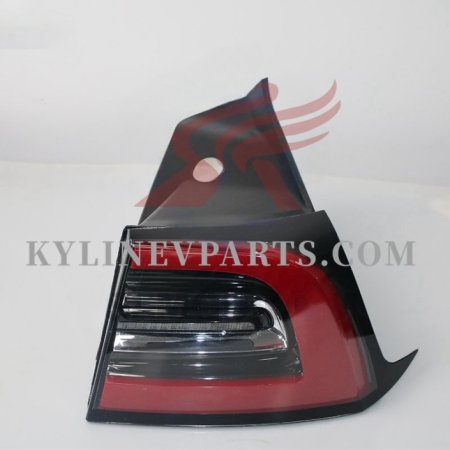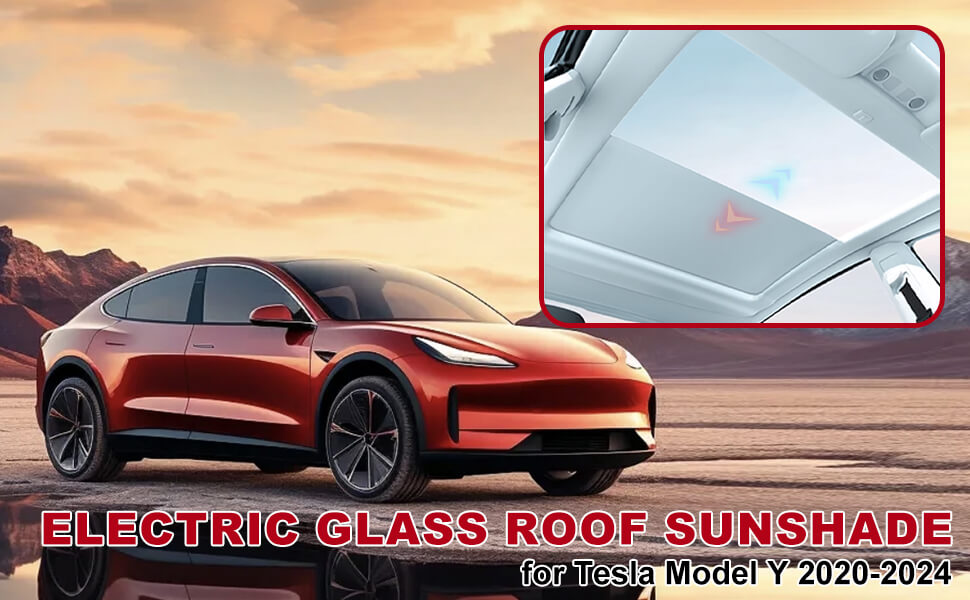What is a Tesla Model Y Rear Diffuser OEM, and Why is It Important for the Tesla Model Y?
A rear diffuser isn’t just a cosmetic upgrade for your Tesla Model Y—it’s a game-changer for both performance and style. If you’re curious about how this component can elevate your driving experience, you’re in the right place. Let’s dive into what makes a rear diffuser essential for your Model Y.
Definition and Function of a Rear Diffuser
So, what exactly is a rear diffuser? Positioned at the rear underside of your vehicle, a rear diffuser is an aerodynamic marvel. It works by managing the airflow that travels beneath your car. The diffuser’s primary role is to minimize aerodynamic drag and enhance vehicle stability. Through a cleverly designed shape, it channels air, creating a low-pressure zone. This balance of aerodynamic forces not only boosts handling but also optimizes high-speed performance.
How Rear Diffusers Work: Venturi Effect and Airflow Management
At the heart of a rear diffuser’s functionality is the Venturi effect. Imagine air speeding through a narrow space—it’s precisely what happens inside the diffuser. As the air accelerates, it lowers pressure beneath the vehicle. This effect increases downforce, which means your Model Y sticks to the road better and experiences less drag. Such effective airflow management is crucial, especially when cruising at high speeds, as it reduces turbulence and maintains a smooth flow of air.
The Visual Impact: Enhancing the Sporty Look of the Tesla Model Y
But let’s not forget the aesthetics. A rear diffuser doesn’t just enhance performance—it transforms the look of your Model Y. With its sleek lines and aggressive design, a diffuser can make your Tesla stand out on the road. Whether you choose a high-gloss carbon fiber finish or a more understated polypropylene option, the diffuser adds a touch of sophistication and sportiness to the rear of your vehicle.
Material Comparison: Carbon Fiber vs. Polypropylene for Tesla Model Y Rear Diffuser OEM
When choosing a rear diffuser for your Tesla Model Y, the material you select can significantly impact both performance and appearance. Carbon fiber and polypropylene are two popular options, each with its unique set of advantages and considerations. Here’s a closer look at how these materials stack up.
Durability: Longevity and Resistance to Environmental Factors
Carbon Fiber: Renowned for its strength and lightweight, carbon fiber offers exceptional durability. It’s resistant to rust and corrosion, making it ideal for withstanding various weather conditions. However, it can be susceptible to cracking under high impact or extreme conditions. For a more in-depth look at carbon fiber’s properties, this resource from the American Composites Manufacturers Association provides valuable insights.
Polypropylene: Polypropylene, while not as high-end as carbon fiber, is still quite durable. It’s resistant to impacts, moisture, and UV rays, making it a practical choice for everyday use. This material is less likely to crack compared to carbon fiber, but it may not have the same high-end feel or performance benefits.
Weight: Impact on Vehicle Performance and Handling
Carbon Fiber: One of the key benefits of carbon fiber is its lightweight nature. This reduction in weight can enhance your Model Y’s handling and acceleration. A lighter vehicle is easier to maneuver and can improve overall driving dynamics. The impact of weight on vehicle performance is well-documented in automotive studies, such as this analysis from Engineering ToolBox.
Polypropylene: Polypropylene is heavier than carbon fiber but still relatively light compared to other materials. While it may not offer the same performance benefits as carbon fiber, it still contributes to better handling compared to heavier options.
Cost Analysis: Price Comparison and Value for Money
Carbon Fiber: Typically, carbon fiber rear diffusers come with a higher price tag due to the material’s premium status and manufacturing complexity. However, the investment may be worthwhile for those seeking top-tier performance and a high-end look. For a comprehensive look at the costs associated with carbon fiber components, this cost comparison guide offers useful insights.
Polypropylene: Polypropylene diffusers are more budget-friendly. They provide good value for money without sacrificing too much on durability and performance. If cost is a major factor, polypropylene is a practical choice that doesn’t break the bank.
OEM Fit and Finish: How Closely Each Material Matches the Original Tesla Design
Carbon Fiber: Carbon fiber often provides a closer match to the original Tesla design, offering a refined and high-end look. Its finish is typically smooth and glossy, closely aligning with Tesla’s premium aesthetics. For examples of high-quality carbon fiber finishes, this guide from Tesla Accessories showcases various carbon fiber options.
Polypropylene: While polypropylene may not achieve the same level of refinement as carbon fiber, it is still designed to fit well with the Tesla Model Y’s original design. It offers a more practical solution that maintains good aesthetics without the premium price.
Aesthetics: Which Material Looks Better, and Why?
Carbon Fiber: The visual appeal of carbon fiber is unmatched. Its glossy finish and distinctive weave patterns add a touch of sophistication and sportiness. This material is often chosen by enthusiasts looking to make a bold statement.
Polypropylene: Polypropylene diffusers are more subtle and functional. While they may not have the same visual impact as carbon fiber, they are available in various finishes that can complement your Model Y’s appearance.
Choosing the right material for your rear diffuser depends on your priorities—whether it’s high performance, visual appeal, or cost-efficiency.
Performance Impact of Tesla Model Y Rear Diffuser OEM
Adding a rear diffuser to your Tesla Model Y can transform not just its appearance but also its driving dynamics. Rear diffusers play a significant role in enhancing the vehicle’s performance by influencing aerodynamics and handling. This section explores how different materials impact performance and what benefits you can expect from installing a rear diffuser.
Aerodynamics: Enhancing Downforce and Reducing Drag
Carbon Fiber: Carbon fiber rear diffusers are designed to maximize aerodynamic efficiency. They achieve this by creating a smooth airflow underneath the vehicle, reducing turbulence and drag. The result is improved downforce, which increases the vehicle’s grip on the road, particularly at high speeds. This enhanced stability can lead to better cornering and a more confident driving experience. For a detailed explanation of how aerodynamic principles apply to car performance, check out this article from Car and Driver.
Polypropylene: While polypropylene diffusers may not offer the same level of aerodynamic refinement as carbon fiber, they still contribute to reducing drag and improving airflow management. They help maintain a steady airflow underneath the car, which can enhance stability and reduce lift. Polypropylene is a practical choice for those who want moderate performance improvements without the premium cost associated with carbon fiber.
Handling and Stability: Material Influence on Vehicle Dynamics
Carbon Fiber: The lightweight nature of carbon fiber means it can significantly impact handling and stability. By reducing the vehicle’s weight, carbon fiber diffusers improve the Model Y’s responsiveness and agility. This material enhances overall driving dynamics by lowering the center of gravity and providing more precise handling. For insights into how weight affects vehicle dynamics, this guide from Automotive Engineering offers valuable information.
Polypropylene: Although polypropylene diffusers are heavier than carbon fiber options, they still offer benefits in terms of handling. The added weight can provide a more grounded feel, which might be preferable for drivers looking for a stable and controlled driving experience. However, the difference in handling between polypropylene and carbon fiber is noticeable, with carbon fiber generally providing a more performance-oriented feel.
Fuel Efficiency: Does a Rear Diffuser Impact Energy Consumption?
Carbon Fiber: The aerodynamic improvements provided by carbon fiber diffusers can lead to better fuel efficiency. By reducing drag, the vehicle requires less energy to maintain speed, which can translate into modest improvements in range. For more information on how aerodynamic modifications impact fuel efficiency, this study by the Society of Automotive Engineers provides a detailed analysis.
Polypropylene: Polypropylene diffusers, while offering some aerodynamic benefits, might not provide the same level of fuel efficiency improvements as carbon fiber. Nonetheless, they still contribute to reducing drag and maintaining energy efficiency, albeit to a lesser extent.
Real-World Performance Tests: Case Studies and Data-Backed Comparisons
Carbon Fiber: Several performance tests and case studies have shown that carbon fiber diffusers significantly improve vehicle performance. For instance, this test by Edmunds highlights how high-quality diffusers can enhance aerodynamic efficiency and handling.
Polypropylene: While not as extensively tested as carbon fiber, polypropylene diffusers have shown practical benefits in real-world scenarios. They offer a balance of performance and cost, making them a viable option for many Tesla Model Y owners. For practical performance data on polypropylene components, see this review from MotorTrend.
Installation and Maintenance Considerations for Tesla Model Y Rear Diffuser OEM
Installing a rear diffuser on your Tesla Model Y can be a rewarding upgrade, but it’s important to approach the process with careful consideration. This section covers everything you need to know about the installation and maintenance of rear diffusers, including practical tips and potential challenges.
Installation Difficulty: Step-by-Step Guide for DIY vs. Professional Installation
DIY Installation: Installing a rear diffuser yourself can be a cost-effective option, provided you have the right tools and skills. Here’s a general guide to help you through the process:
Preparation: Ensure your Model Y is clean and dry. Gather necessary tools such as a screwdriver, socket set, and adhesive if required.
Remove Existing Parts: If your vehicle has a factory diffuser or other parts that need to be removed, follow the manufacturer’s instructions for safe removal.
Fit the Diffuser: Position the new rear diffuser and align it with the mounting points. Check for a secure fit before proceeding.
Secure the Diffuser: Use the provided hardware or adhesive to attach the diffuser. Ensure all fasteners are tightened to avoid vibrations.
For a detailed DIY guide, you can refer to this tutorial on Tesla Owners Club.
Professional Installation: If you prefer a hassle-free experience or lack the tools, professional installation is a reliable option. Experts ensure that the diffuser is properly aligned and secured, minimizing the risk of installation errors. You can find professional installation services at Tesla Service Centers or specialized automotive shops.
Tools and Expertise Required: What You Need to Know Before Starting
For DIY installation, essential tools include:
- Screwdrivers and wrenches
- Socket set
- Adhesive or mounting hardware
- Trim removal tools (if needed)
Having some mechanical expertise can also be beneficial. If you’re not confident in your skills, consulting with a professional can save time and ensure the diffuser is correctly installed.
Maintenance Needs: How to Care for and Maintain Each Material
Carbon Fiber: Carbon fiber diffusers require minimal maintenance but should be cleaned regularly to maintain their glossy appearance. Use a mild soap and water solution to avoid damaging the finish. Avoid abrasive cleaners that can scratch the surface. For deeper maintenance, consider using specialized carbon fiber care products. Detailing World offers great tips for maintaining carbon fiber components.
Polypropylene: Polypropylene diffusers are durable and low-maintenance. Regular washing with soapy water will keep it looking clean. Inspect the diffuser periodically for any signs of wear or damage, and address any issues promptly to prevent further deterioration.
Warranty and OEM Standards: Ensuring Compatibility and Protection of Your Tesla’s Warranty
When installing a rear diffuser, ensure it meets OEM standards to avoid voiding your vehicle’s warranty. If you choose an aftermarket diffuser, verify that it is compatible with your Model Y and does not interfere with any vehicle systems.
Cost-Benefit Analysis: Which is the Better Investment for Your Rear Diffuser?
When choosing a rear diffuser for your Tesla Model Y, understanding the cost versus benefits of carbon fiber and polypropylene options can help you make a well-informed decision. This section breaks down the factors that influence your investment and provides a clear comparison of each material’s value.
Initial Investment: Comparing the Purchase Price
Carbon Fiber: Typically, carbon fiber rear diffusers are priced higher due to their premium material and complex manufacturing process. Prices can range from $800 to $1,500, depending on the brand and design. For a closer look at carbon fiber pricing, check out this cost analysis from Car and Driver.
Polypropylene: Polypropylene diffusers are more budget-friendly, generally costing between $300 and $600. While less expensive, polypropylene offers good performance at a lower cost. For more on the cost of polypropylene accessories, visit this guide from AutoZone.
Long-term Value: Durability and Resale Value
Carbon Fiber: The durability of carbon fiber is notable, especially when it comes to resisting environmental factors like rust and corrosion. However, it can be prone to cracking under significant impact. Despite this, its high-end appearance often ensures good resale value. For more on carbon fiber’s durability and resale value, see this article from MotorTrend.
Polypropylene: Polypropylene offers solid durability and resistance to impacts, moisture, and UV rays. While it may not match carbon fiber’s premium feel, it is less likely to crack, making it a reliable choice for long-term use. Polypropylene also maintains decent resale value, though it’s generally lower than carbon fiber.
Hidden Costs: Installation, Maintenance, and Potential Replacements
Carbon Fiber: Installation of a carbon fiber diffuser might be more complex, potentially increasing labor costs if you opt for professional installation. Maintenance is relatively low, but you should be cautious of scratches and impacts. For installation cost considerations, refer to this resource from Edmunds.
Polypropylene: Polypropylene diffusers are easier to install, which can lower installation costs. Maintenance is minimal, involving regular cleaning. The lower price point often means fewer replacement costs. For more on the cost-effectiveness of polypropylene parts, see this review from J.D. Power.
Overall ROI: Which Option Offers Better Returns on Investment?
Carbon Fiber: Despite the higher initial cost, carbon fiber’s aesthetic appeal and potential for higher resale value can offer a better overall return on investment for enthusiasts and those seeking premium upgrades. Its performance benefits, combined with long-term durability, can make it a worthwhile investment for those who prioritize high-quality materials.
Polypropylene: For budget-conscious buyers, polypropylene provides excellent value with lower upfront costs and minimal maintenance expenses. While it may not offer the same level of refinement or resale value as carbon fiber, it represents a practical choice with good performance for the price.
In Conclusion: Deciding between carbon fiber and polypropylene depends on your budget, performance expectations, and personal preferences. If you’re looking for a high-end, visually striking option with strong performance benefits, carbon fiber is a worthy investment. Conversely, if cost-efficiency and practicality are your main concerns, polypropylene offers a solid, budget-friendly choice.
Where to Buy Tesla Model Y Rear Diffuser OEM?
Kylin EV Parts Ltd is located in Guangzhou, the hub of China’s automotive parts industry. Established in 2013, we focus on the supply chain of new energy automotive parts, providing brand solutions for entire vehicle series from a screw to exterior components, connecting the upstream and downstream supply chains, and forming strategic alliances with production factories through customization, alliance. Adhering to the principle of ensuring the quality of a component is equal to protecting the safety of a family.
In 2022, our international trade department was established, focusing on the integration of Tesla, VW, and BYD, as well as aftermarket modifications. As China’s premier B2B supplier, we offer a comprehensive service in integrating EV spare parts for numerous foreign sellers, both online and offline.
We extend a cordial invitation to collaborate with foreign dealers and explore OEM and ODM partnerships for our products. With our commitment to the most professional service, the highest quality products, and the most reasonable prices, we endeavor to provide unparalleled support.

